Running’s golden age of technology
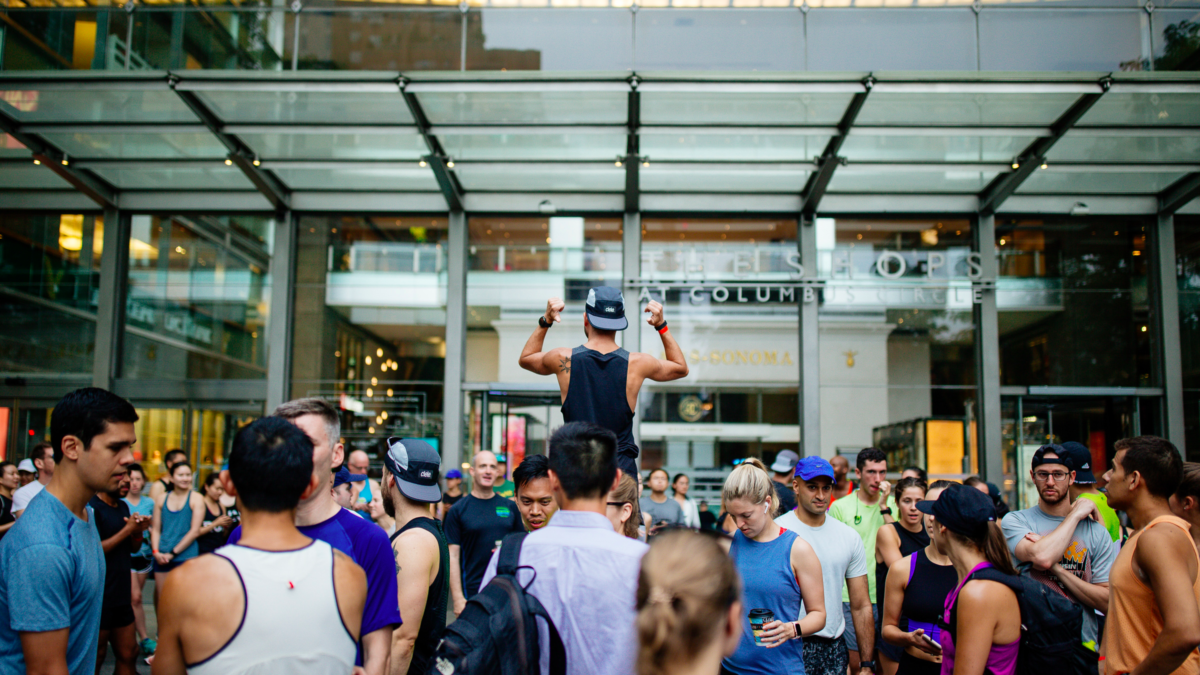
When Ron Granich started running in 1977, he did it the hard way. He began by running his neighbourhood streets in Montreal block by block, eventually graduating to early morning, all-weather runs on Mount Royal. He’s competed in triathlons and Ironman competitions since but his first run is the most memorable. “I was bitten by a dog,” he says.
We all have our challenges. Finding time to run can be a big obstacle for parents with young kids or people with busy work schedules. New runners struggle with staying motivated or getting sound advice. Bad weather can thwart even the most dedicated athletes, and it’s always hard finding good running partners.
Today, Granich is 73, and he relies on a running app called Zwift to stay motivated in the winter. He still trains outside in summer but come October, he moves indoors to his local gym to run on what he calls the “dreadmill.” Zwift offers Granich an alternative to running in Montreal’s nasty weather while helping him fight boredom by allowing him to run with other runners online.
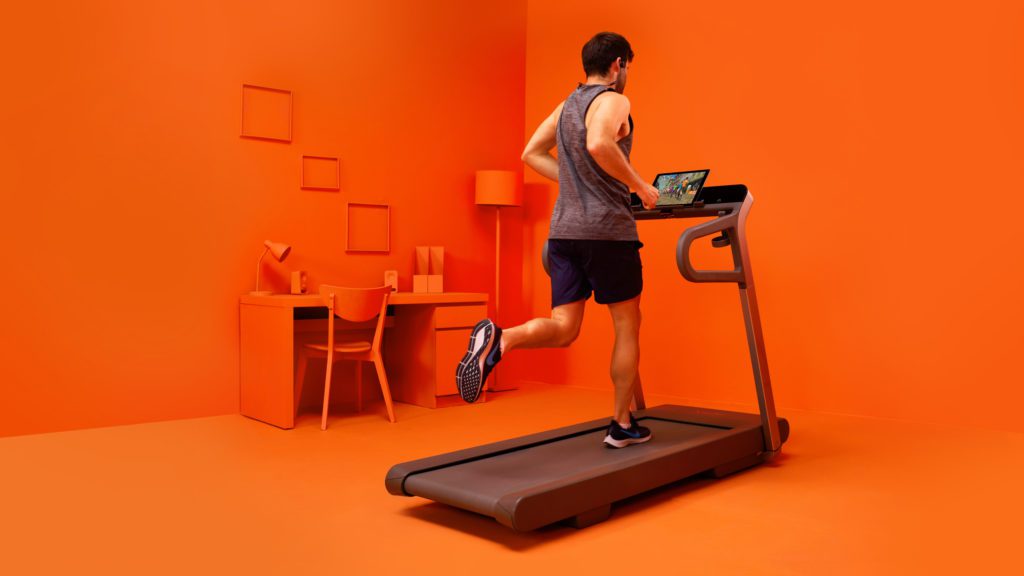
Now that almost everyone has a phone or watch that can track their physical activity, product and app designers are focusing on new ways to make running safer, more convenient and more fun. Running apps for mobile phones, online running classes and virtual running events mean that people can run when and how they want.
The biggest challenge is navigating the growing range of options. For example, treadmill apps like Nike Running Club, Adativ, Zwift and devices like the Peloton Tread all offer a great indoor running experience but are designed for runners with different needs and interests. Compare Zwift and Peloton, products that represent polar opposites.
Zwift: The Runners’ Virtual World
Zwift is like a video game for treadmill runners. Users download the app to their computer or tablet, and wear an inertial foot pod or smart shoes equipped with Under Armour’s Record Sensor technology to track their movements. When the runner enters Zwift’s virtual world, Watopia (or a virtual version of cities like London or Innsbruck), a customizable avatar mimics their running motions as they join other runners in virtual space. Zwift offers training sessions, multi-day exercise plans in addition to runs and races with other Zwifters from around the globe.
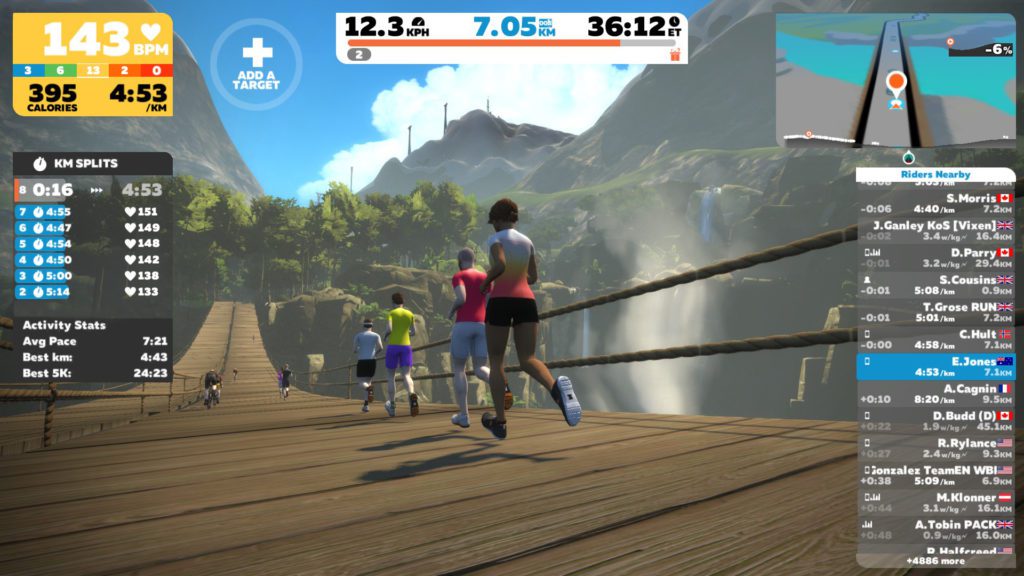
Zwift attracts runners with a keen interest in technology and a willingness to experiment. Some Zwifters create a more immersive running experience by equipping their pain caves with special setups that include dedicated computers, big screen TVs and Zwift-compatible smart treadmills. Others map out and help organize group runs and races in Watopia.
Granich is a Zwifter. He says, “Montreal is known for its huge potholes and crappy weather so Zwift has made my life easier and safer.” The retiree gets much of his motivation from Zwift’s active and outgoing online community, and he joins training runs and races on a daily basis. He says, “If it weren’t for Zwift, I’d be watching soap operas.” Zwift Run is free while it remains in beta. Sister product, Zwift Cycling, is US$14.99 per month.
Virtual Racing with Strava
Technology is also changing how runners participate in races and virtual racing is becoming the biggest trend to hit the recreational racing scene in years. Shawn Exley, a chiropractor from Vancouver, B.C. started running four years ago and is a dedicated outdoor runner who says, “There’s no time in Vancouver when you can’t get outside.” He now races in five or six half-marathons each year and is starting to include virtual races in his calendar.
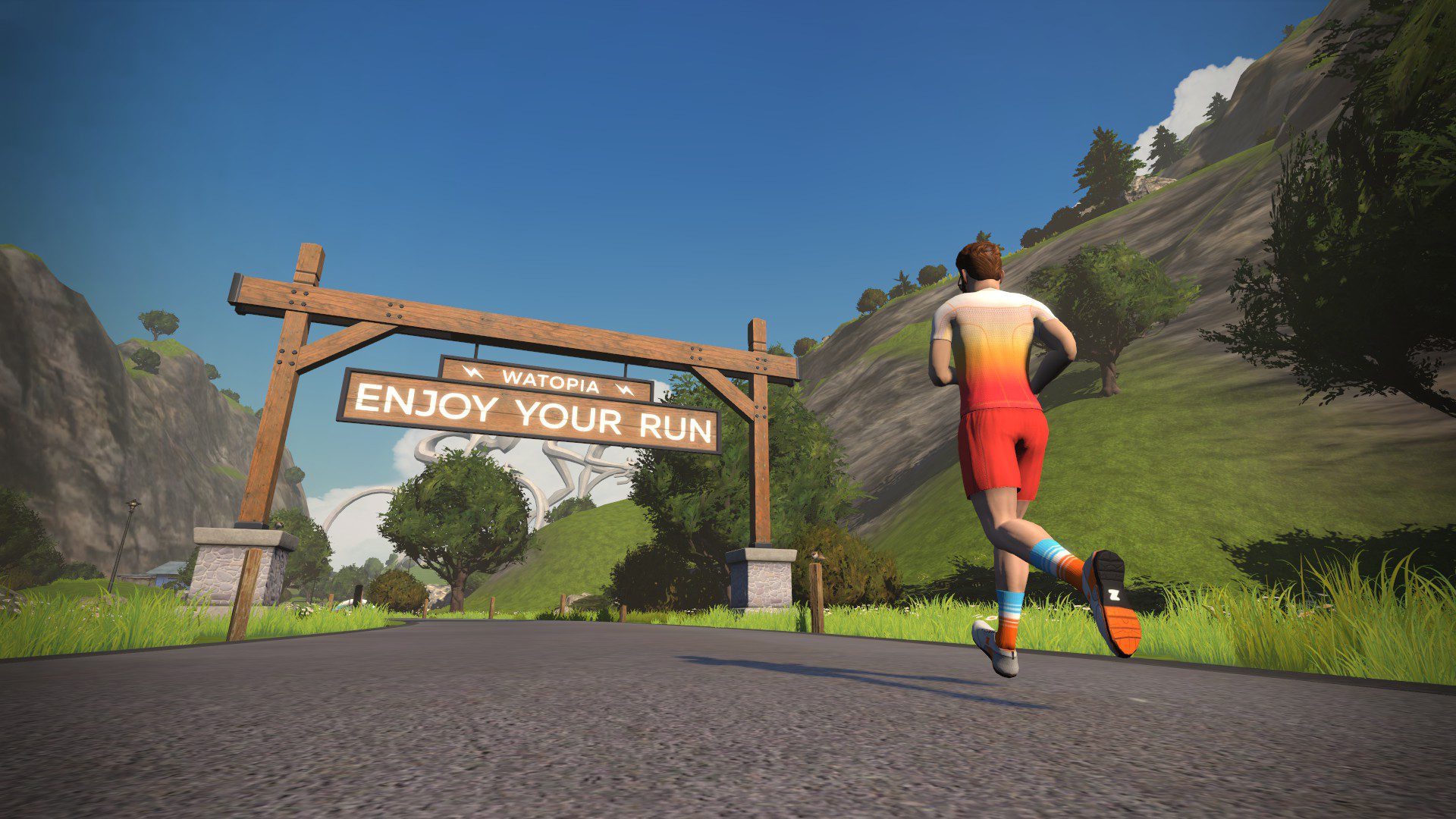
Exley is a loyal user of Strava, a well-established app that’s popular among cyclists and runners who use it to track their activities and share results on what Strava calls their “social fitness network.” Strava is also active in helping organize virtual races and helped introduce Exley to his first events.
Exley ran in Lululemon’s SeaWheeze Virtual Half earlier this summer. He didn’t bother registering for the live event because it’s become so popular, organizers have to conduct a lottery to select participants. But when he saw a promotion on Strava for the Virtual Half, he registered immediately. To his delight, he was the first place Canadian finisher and placed fourth overall.
The SeaWheeze Virtual Half is among a growing number of virtual races that are run in parallel to live events. For the Virtual Half, competitors were asked to pre-register online, choose their own 21.1 km route and track the results on Strava. Entrants had the week following the live race to run their route and if they completed it, they received an exclusive finisher’s medal.
Lululemon organized the Virtual Half, in part, to build on the resounding success of SeaWheeze. Rachel Kelly, Lululemon’s global event manager says, “We are keen to find ways to make the event more accessible to anyone who didn’t get in at registration or wasn’t able to make the trip to Vancouver as a destination race.”
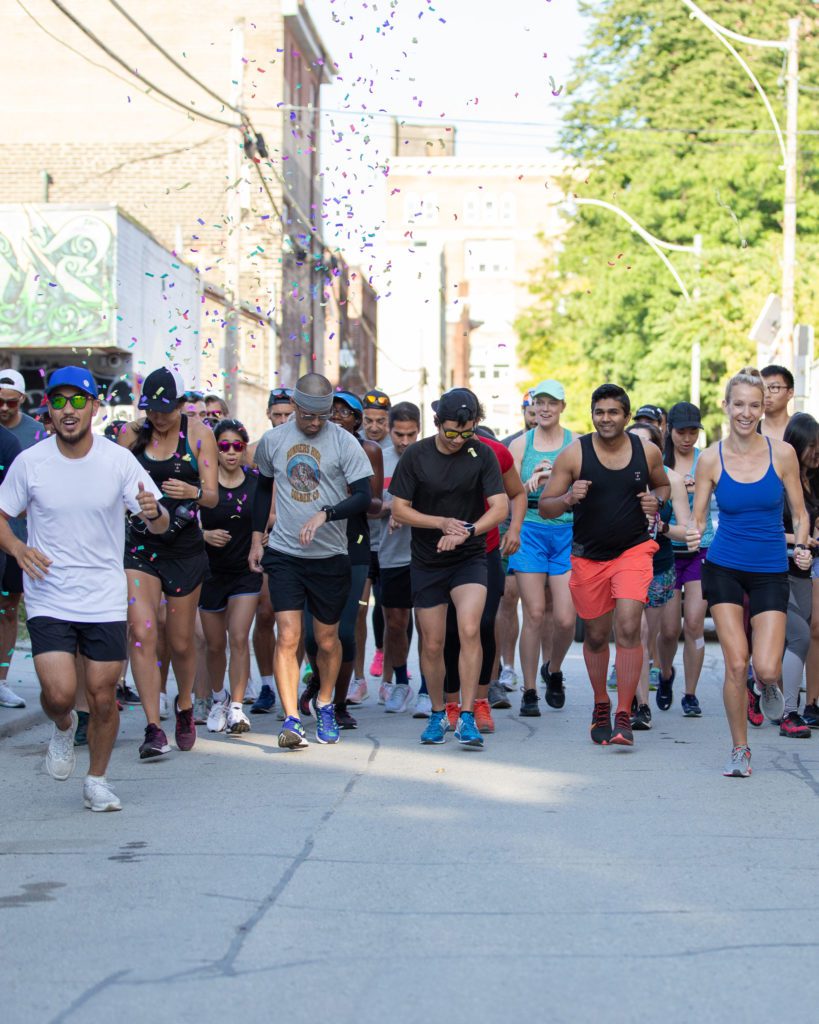
Planning was critical to the Virtual Half’s success. Lululemon partnered with Strava and the online race organization system, Race Roster to plan the virtual race and ensure that technical issues were ironed out early. Entrants were also invited join SeaWheeze training programs just like runners in the live event. Kelly says “We opened up our SeaWheeze training programs created by our Global Run Ambassador Rob Watson to our virtual runners, so they were able to prepare ahead of time.” Organizers at Lululemon were “blown away” when over 6,000 runners participated in the first time event.
Exley says he’ll incorporate more virtual races into his schedule to help fill gaps between his real world events. Virtual races are less expensive, so they help him control how much he spends on entry fees. He also appreciates how virtual events allow him to run the event when and where he likes. “[SeaWheeze] had eight days that you had to do it in, so it allows more flexibility.”
Online Classes with Peloton Tread
In comparison, the Peloton Tread, yet to be released in Canada, is a highly refined experience that comes at a premium. Customers can purchase a special Peloton treadmill with its own 32″ high definition touchscreen and pay a monthly subscription for access to Peloton fitness classes which are broadcast from Peloton’s high-end fitness studio in New York City.
Runners have the choice of joining live sessions or selecting from a library of pre-recorded running classes and multi-day exercise plans. For those with aspirations of cross-training, Peloton also offers cycling, strength, yoga and meditation classes.
Peloton has stores located in major cities across Canada, and it’s worth visiting them to see Peloton’s products in person. Their fitness equipment wins raves among reviewers in the United States for elegant design and high quality construction. High energy online classes are led by one of eleven elite running instructors who are considered celebrities among Peloton regulars.
When the Tread arrives in Canada, it may well be an alternative for those willing to pay extra to avoid the hassle of setting up their devices or who want to participate in Peloton’s classes. If buying a Tread isn’t in your budget, the Peloton Digital app offers access to Peleton’s live and pre-recorded classes for $19.99 a month.
Training Peaks for Remote Coaching
Runners with specific training goals can get a more personalized approach from remote coaches and personal trainers. Using a coaching app, the remote coach posts a weekly training schedule for the athlete to follow. As the athlete completes each workout, they record their results on a smartwatch or digital heart rate monitor and post them on the app for the coach to analyze. From time to time, the coach and athlete meet by phone or video conference to discuss progress, review technique or analyze race results. Although remote coaching doesn’t offer all the advantages of working with a trainer in-person, it’s especially convenient for those with busy schedules or for those who live in different places.
Endurance training app Training Peaks is a popular choice for remote coaching and it offers a matching service so that athletes can find the ideal trainer even if they live thousands of kilometres apart. The basic version of Training Peaks is free but access to advanced training features costs US$9.92 a month.
Running Communities in Social Media
More socially-oriented runners can participate in events like the Ginger Runner Global Run (GRGR). Ethan Newberry (a.k.a. The Ginger Runner) organizes the GRGR, an event he holds for followers of his Youtube channel. Creating community is important to Newberry and the GRGR is designed to be accessible and inclusive for as many runners as possible. Newberry sets challenges for distance and altitude as well as for more whimsical and creative feats like donut eating and film-making. Entrants are also encouraged to identify personal goals for the two-hour run.
Newberry believes the amount of online social interaction within the GRGR community is what helps set the GRGR apart from other virtual events. He says, “There’s Facebook groups, Strava groups, Messenger groups, regional groups and a myriad of methods by which our participants communicate and keep each other excited.” Newberry is also proud of the collection of high quality gear he creates with event partners to share with registrants.
He also believes the event gives participants an important opportunity to explore their own limits: “The biggest highlight for most runners is giving themselves a chance to see what they can really do on their own…The results are all over the map and it’s absolutely fantastic to see the results trickle in over the weekend!”
In its fourth year, the 2019 run is a one-day event in which entrants must complete a two-hour run (or activity) on a route of their choosing between 12:01 a.m. and 11:59 p.m. on October 13. When they finish, they upload their tracking data to Strava. Newberry is anticipating more than 1,000 participants this year. Visit rungrgr.com for more information.
This story originally appeared in the November & December 2019 issue of Canadian Running.
Dave Robertson is a trail runner and writer based in western Canada


